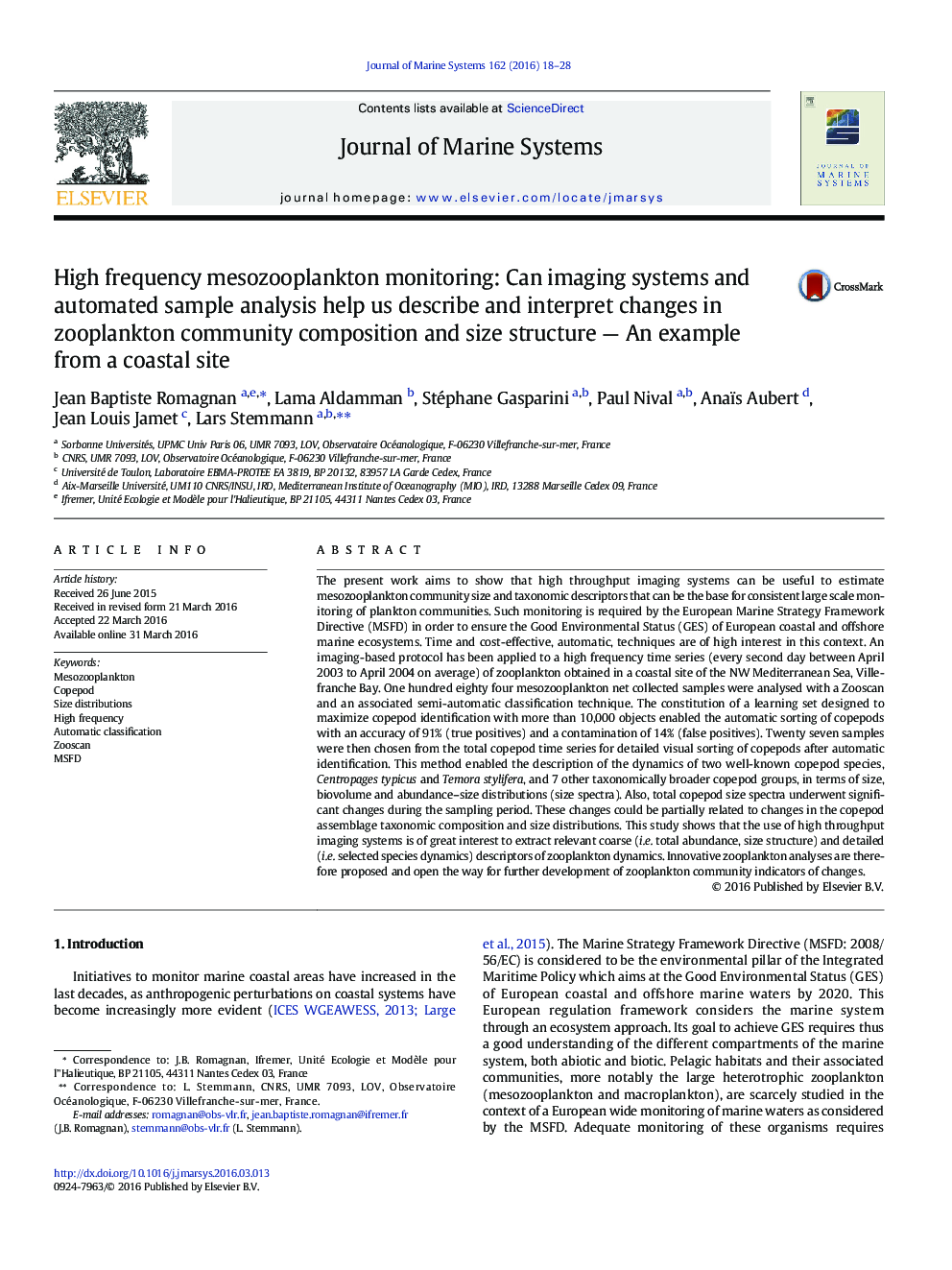| کد مقاله | کد نشریه | سال انتشار | مقاله انگلیسی | نسخه تمام متن |
|---|---|---|---|---|
| 4547866 | 1627268 | 2016 | 11 صفحه PDF | دانلود رایگان |

• A high frequency (HF) time series (every 2nd day for a year) of zooplankton was analysed with a Zooscan
• Imaging systems enable the description of HF zooplankton dynamics based on coarse and detailed taxonomic resolution
• Innovative analyses combining body size and taxonomy open the way for the development of zooplankton community indicators
• Such indicators can be used for HF monitoring of zooplankton in European coastal waters as imposed by the MSFD
The present work aims to show that high throughput imaging systems can be useful to estimate mesozooplankton community size and taxonomic descriptors that can be the base for consistent large scale monitoring of plankton communities. Such monitoring is required by the European Marine Strategy Framework Directive (MSFD) in order to ensure the Good Environmental Status (GES) of European coastal and offshore marine ecosystems. Time and cost-effective, automatic, techniques are of high interest in this context. An imaging-based protocol has been applied to a high frequency time series (every second day between April 2003 to April 2004 on average) of zooplankton obtained in a coastal site of the NW Mediterranean Sea, Villefranche Bay. One hundred eighty four mesozooplankton net collected samples were analysed with a Zooscan and an associated semi-automatic classification technique. The constitution of a learning set designed to maximize copepod identification with more than 10,000 objects enabled the automatic sorting of copepods with an accuracy of 91% (true positives) and a contamination of 14% (false positives). Twenty seven samples were then chosen from the total copepod time series for detailed visual sorting of copepods after automatic identification. This method enabled the description of the dynamics of two well-known copepod species, Centropages typicus and Temora stylifera, and 7 other taxonomically broader copepod groups, in terms of size, biovolume and abundance–size distributions (size spectra). Also, total copepod size spectra underwent significant changes during the sampling period. These changes could be partially related to changes in the copepod assemblage taxonomic composition and size distributions. This study shows that the use of high throughput imaging systems is of great interest to extract relevant coarse (i.e. total abundance, size structure) and detailed (i.e. selected species dynamics) descriptors of zooplankton dynamics. Innovative zooplankton analyses are therefore proposed and open the way for further development of zooplankton community indicators of changes.
Journal: Journal of Marine Systems - Volume 162, October 2016, Pages 18–28